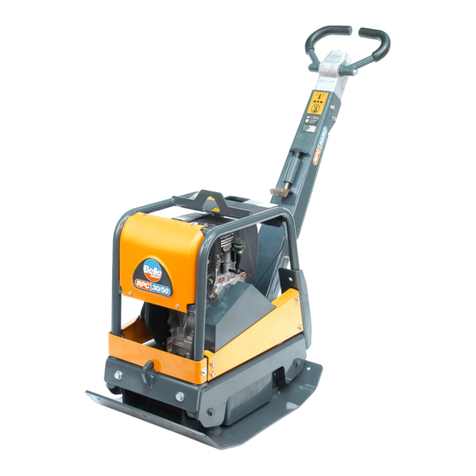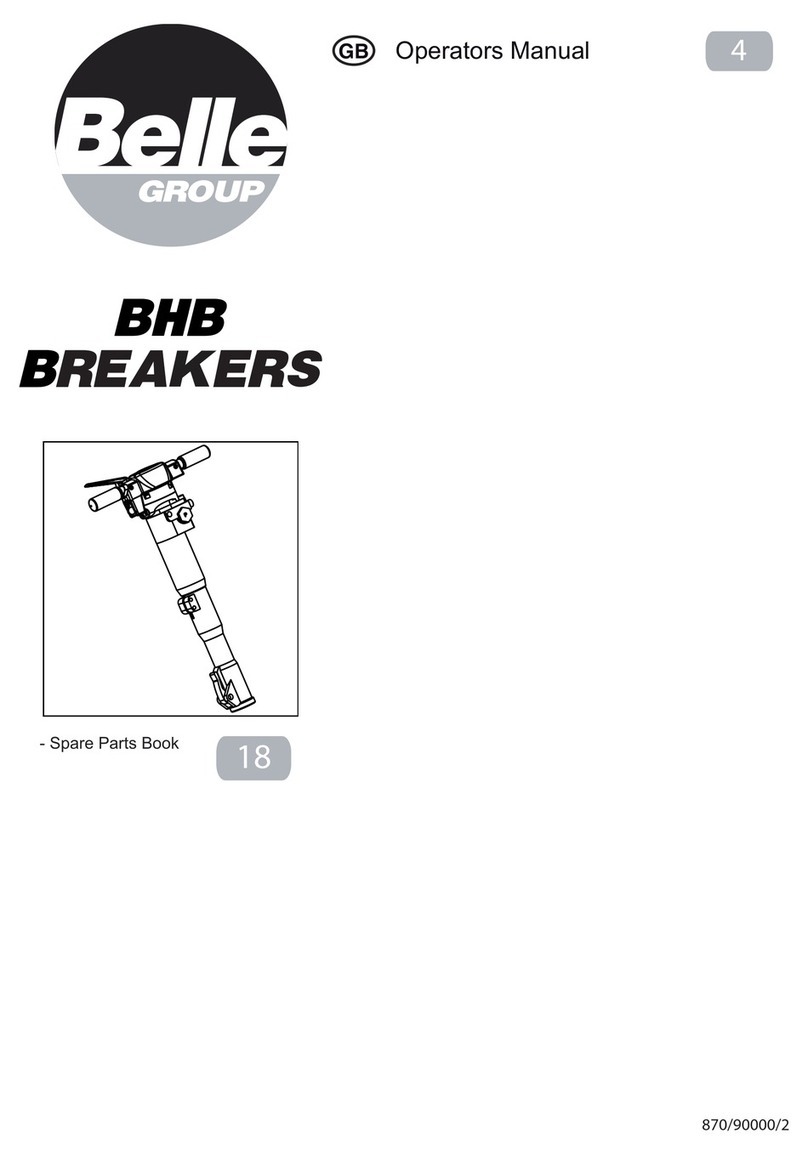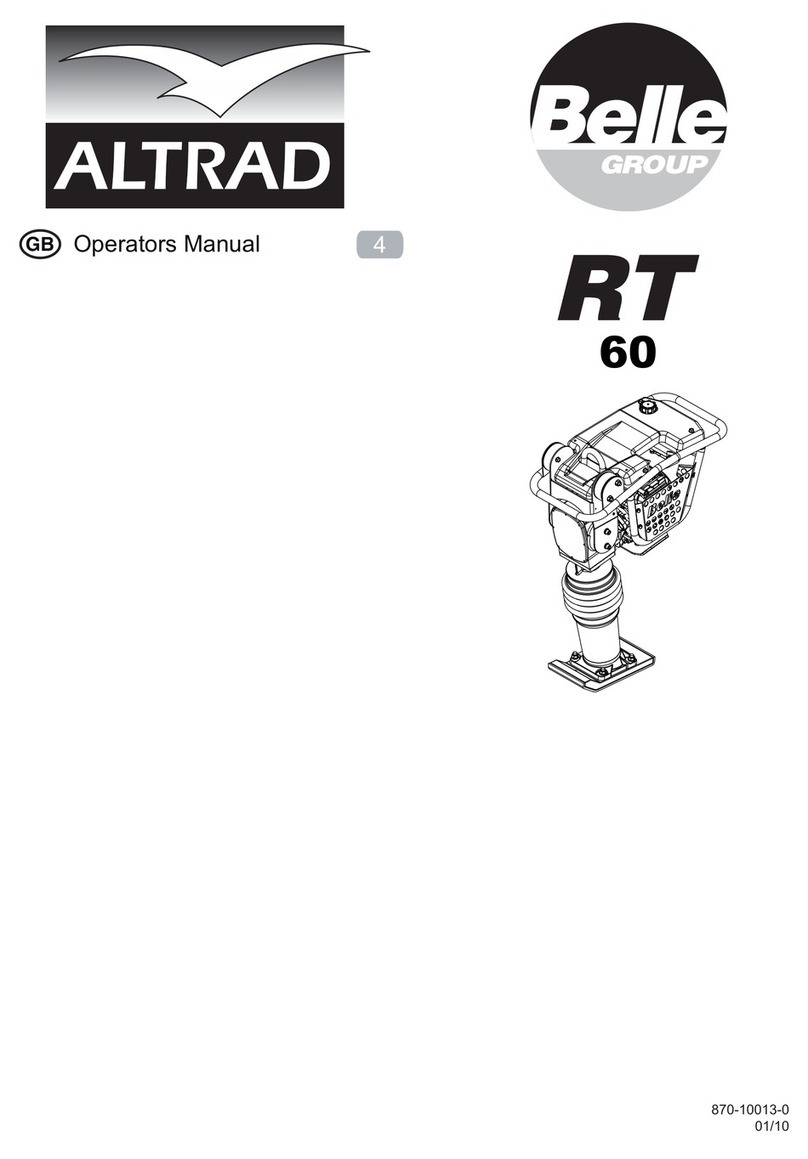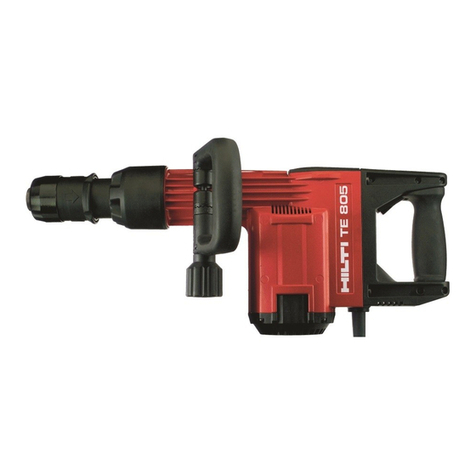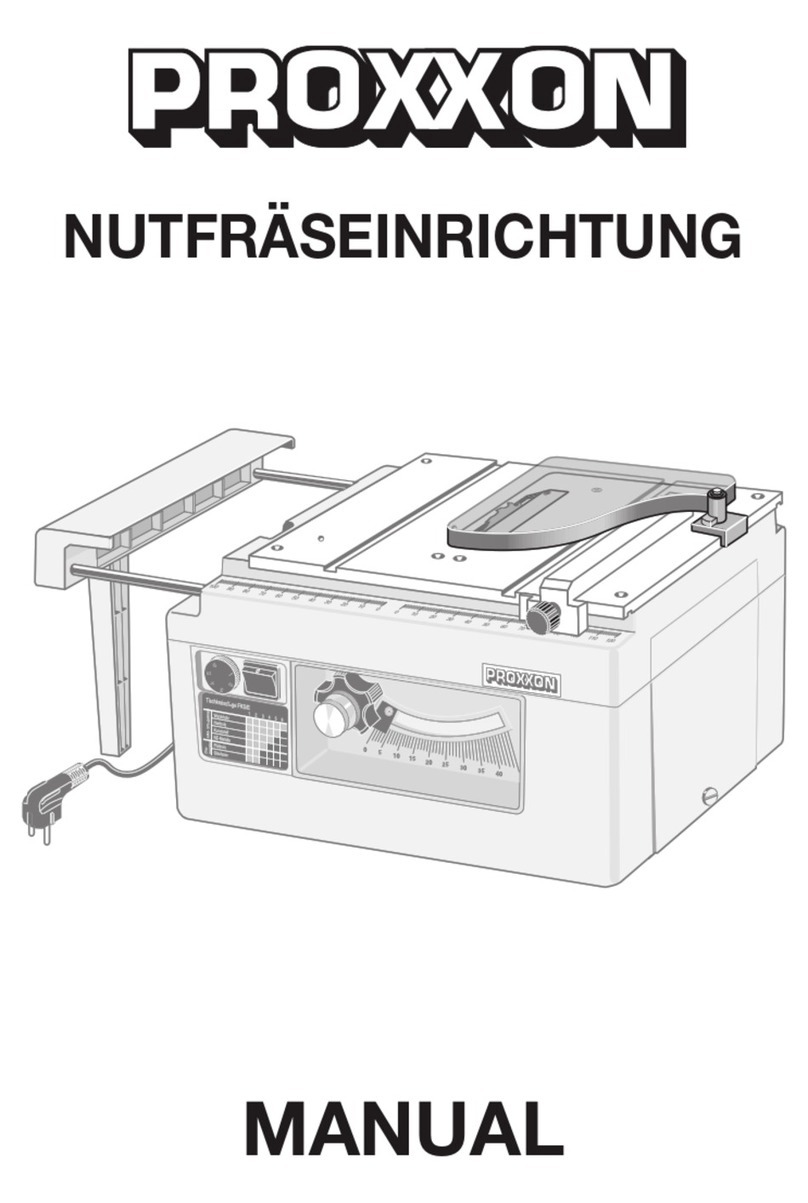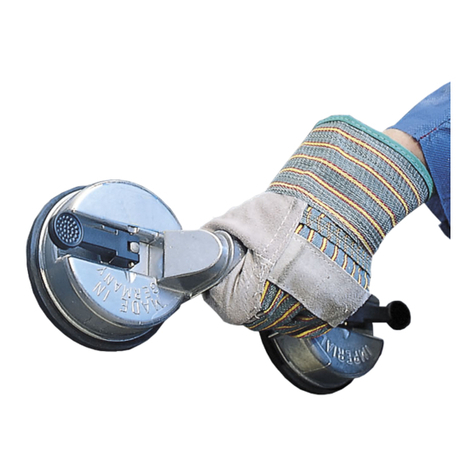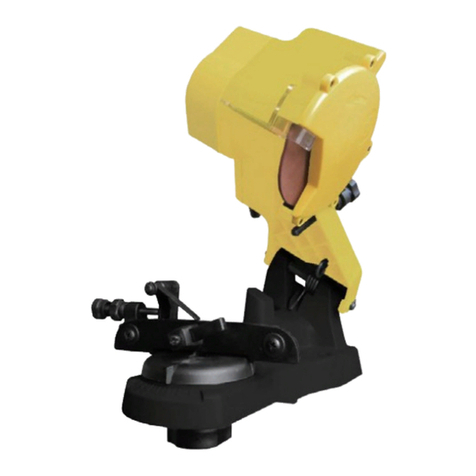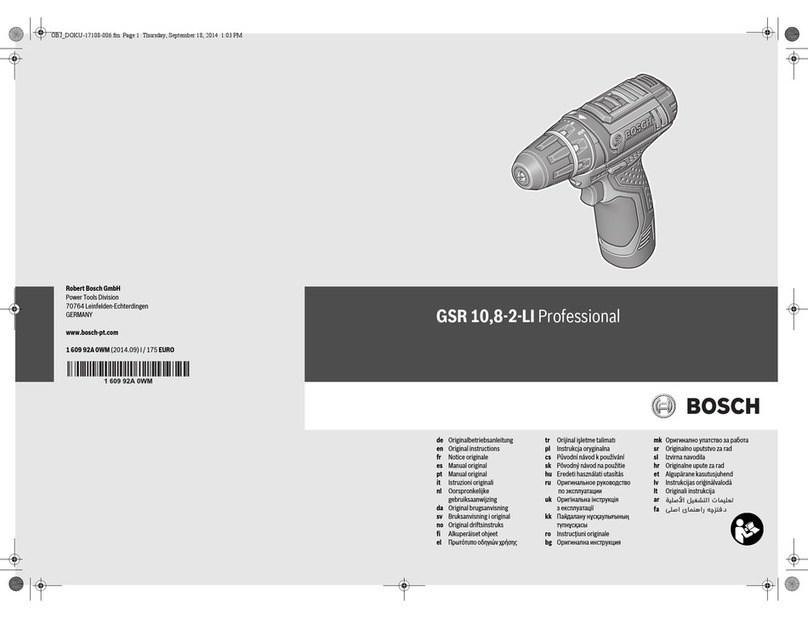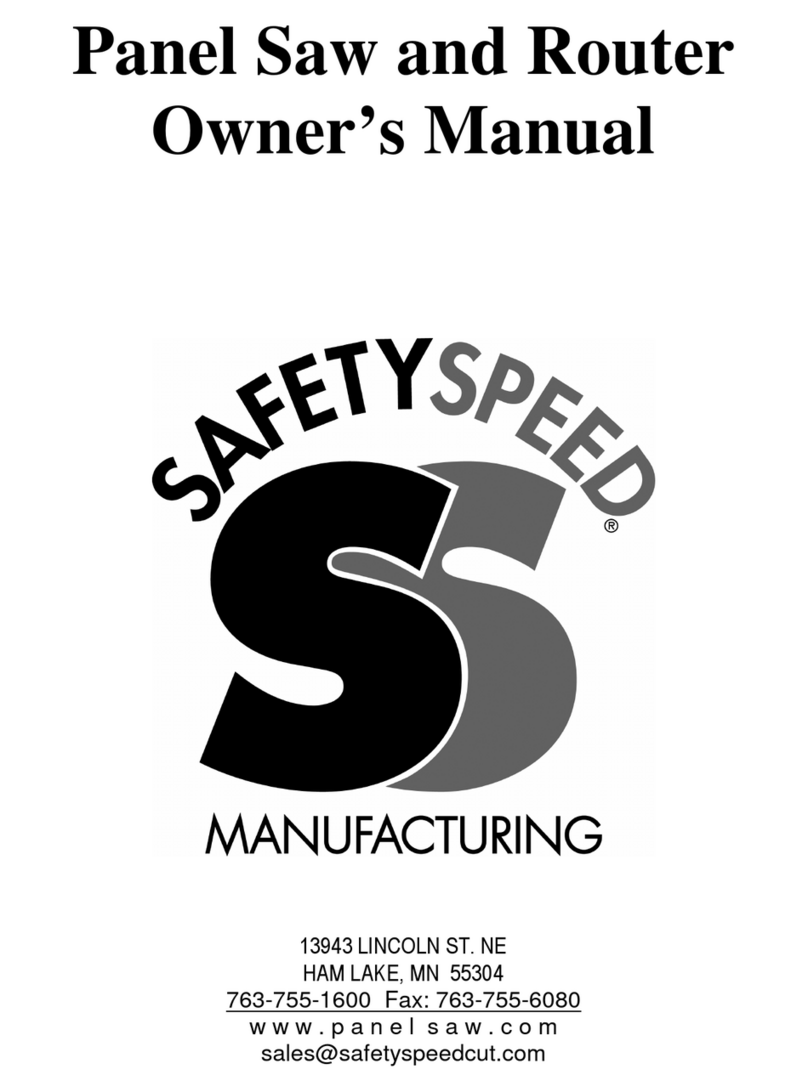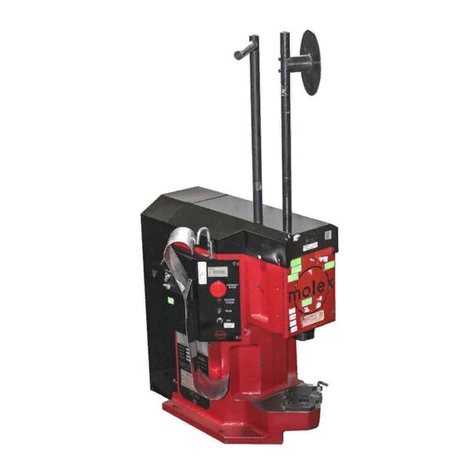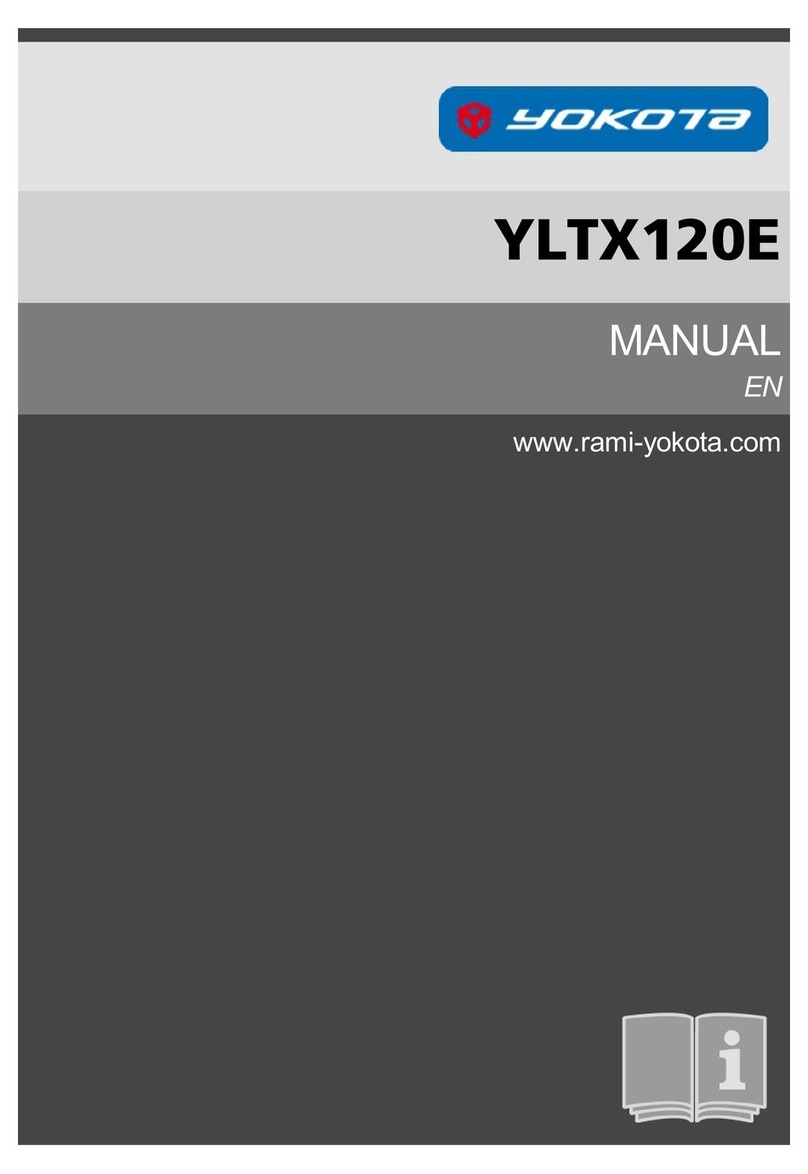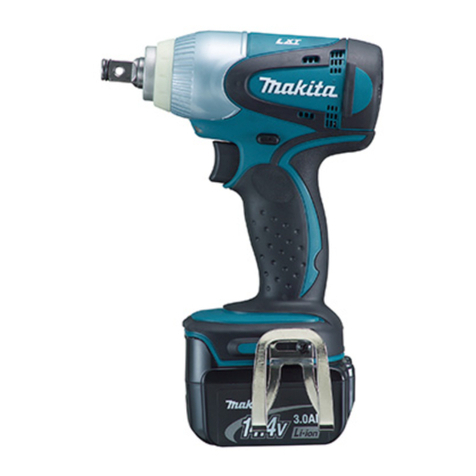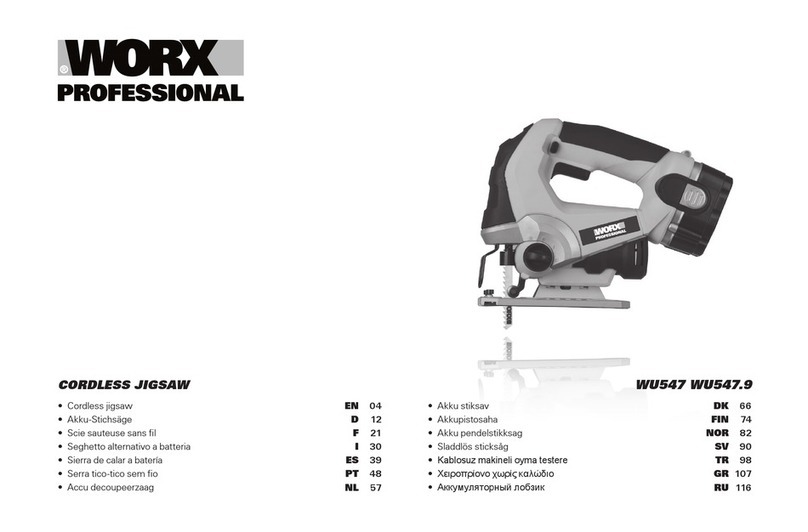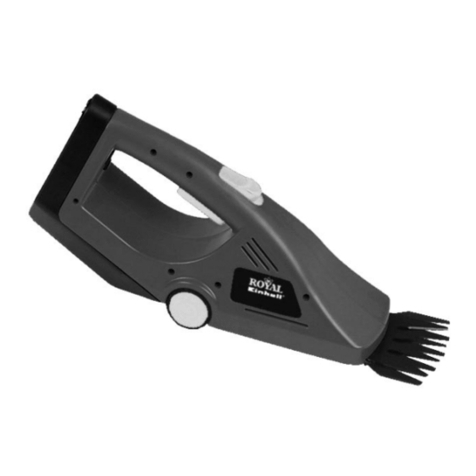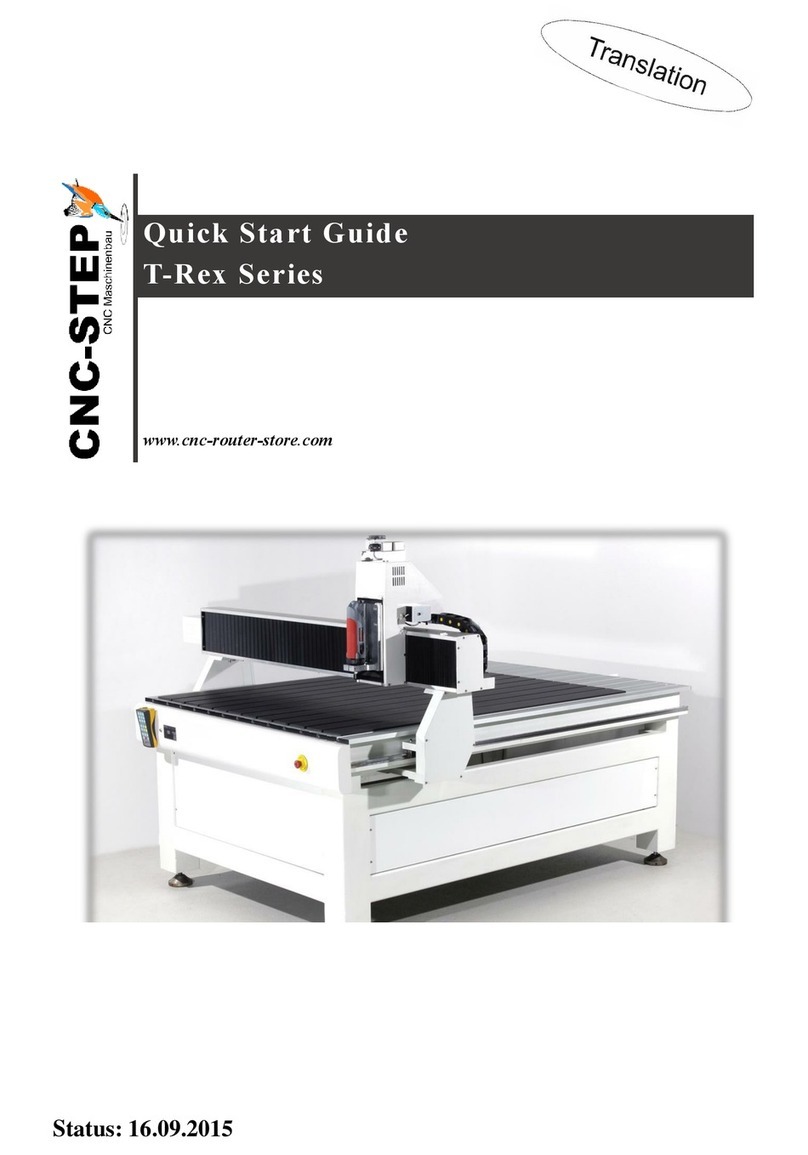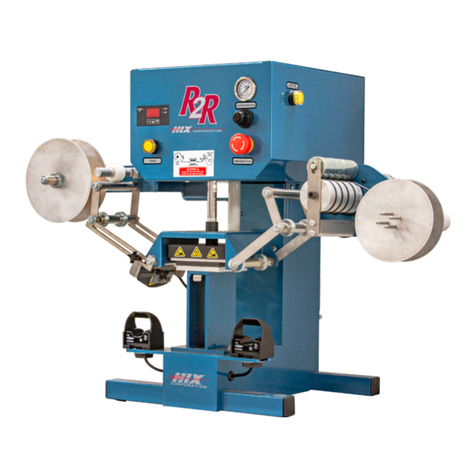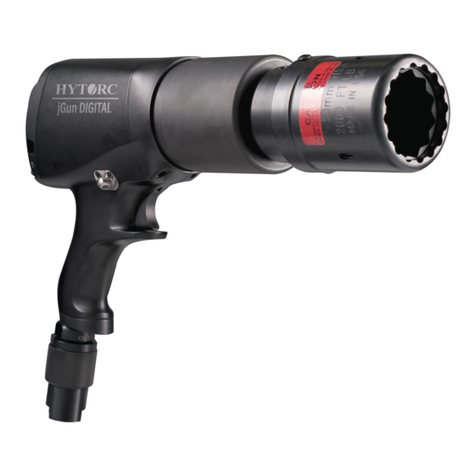Belle Group PCX 12/36 User manual

1
12/36 & 13/40
- Spare Parts Book
- Pièces détachées
- Libro Despiece
- Lista de Peças
- Onderdelen Boekje
- Reservedele Skrift
- Ersatzteilhandbuch
- Manuale dei ricambi
- Bruksanvisning
- Bruksanvisning
- Varaosaluettelo
- Lista Części Zamiennych
- Запасные части Книга
- Varuosade nimekiri
- Rezerves daļu saraksts
- Atsarginiu daliu sarašas
- Част Списък
- αντικατάσταση κομμάτια βιβλίο
- Část Barevný pruh
- Lista Pieselor de Schimb
- Részek Oldalra dől
- Rezervni djelovi Knjiga
Operators Manual
Operators Manual
Manuel De L'Opérateur
Manual del Operador
Manual de Operação
Handleiding
Betjeningsvejledning
Bedienungshandbuch
Manuale Dell'Operatore
Bruksanvisning
Betjene Håndbok
Käyttöohje
Instrukcja Obsługi
Руководство по эксплуатации
Kasutusjuhend
Lietotāja rokasgrāmata
Naudojimo Instrukcija
Oпepaтop Pъчeн
χειριστής χειροποίητοs
Na’vod K Obzluze
Manualul Operatorului
Kezelõk Kézi
Uputstvo za rukovatelja
GB
F
E
P
NL
DK
D
I
S
US
SF
PL
RUS
EST
LV
LT
BG
RO
6
17
28
39
50
61
72
83
94
105
116
127
138
149
160
171
182
193
260
870/10011/1
HUN
204
HR
215
226
237
GR
CZ
NO
248

6
How To Use This Manual
GB
Before you operate or carry out any maintenance on this machine YOU MUST READ and STUDY
this manual.
WARNING
The product can be at risk. The machine or yourself can be damaged or injured if procedures are not
carried out in the correct way.
CAUTION
The life of the operator can be at risk.
WARNING
WARNING
GB
Contents
KNOW how to safely use the unit’s controls and what you must do for safe maintenance. (NB Be sure that you know how to switch the
machine off before you switch on, in case you get into difficulty.)
ALWAYS wear or use the proper safety items required for your personal protection. If you have ANY QUESTIONS about the safe use
or maintenance of this unit, ASK YOUR SUPERVISOR OR CONTACT: BELLE GROUP (UK): +44 (0) 1298 84606
GB
This manual has been written to help you operate and service the PCX Plate Compactor safely.
This manual is intended for dealers and operators of the PCX Plate Compactor.
Foreword
The ‘Environment’ section gives instructions on how to handle the recycling of discarded apparatus in an environmentally friendly way.
The ‘Machine Description’ section helps you to familiarise yourself with the machine’s layout and controls.
The ‘General Safety’ and ‘Health and Safety’ sections explain how to use the machine to ensure your safety and the safety of the
general public.
The ‘Start and Stop Procedure’ helps you with starting and stopping the machine.
The ‘Trouble Shooting’ guide helps you if you have a problem with your machine.
The ‘Servicing’ section is to help you with the general maintenance and servicing of your machine.
The ‘Warranty’ Section details the nature of the warranty cover and the claims procedure.
The ‘CE certificate’ section shows the standards that the machine has been built to.
Directives with regard to the notations.
Text in this manual to which special attention must be paid are shown in the following way:
Belle Group reserves the right to change machine specification without prior notice or obligation.
How to use this manual ............................................................................................................................................................................6
Warning ....................................................................................................................................................................................................6
Machine Description ........................................................................................................................................................................... 7 - 8
Environment .............................................................................................................................................................................................9
Technical Data ..........................................................................................................................................................................................9
General Safety .......................................................................................................................................................................................10
Health and Safety ...................................................................................................................................................................................10
Pre-Start Checks ....................................................................................................................................................................................11
Reasons for Compaction ........................................................................................................................................................................11
Applications ............................................................................................................................................................................................11
Start & Stop Procedure ..........................................................................................................................................................................12
Operating the Compactor .......................................................................................................................................................................13
Trouble Shooting Guide .........................................................................................................................................................................13
Servicing .................................................................................................................................................................................................14
Assembly Instructions .............................................................................................................................................................................15
Fitting Instructions ...................................................................................................................................................................................15
Warranty .................................................................................................................................................................................................16
C.E. Certificate .........................................................................................................................................................................................2

7
Machine Description
GB
Machine Description Decals
1. Throttle lever. A. Safety Decal
2. Choke lever. B. Noise Decals
3. Fuel ON / OFF lever. C. Engine RPM Decal
4. Engine ON / OFF switch. D. Lifting Point Decal
5. Air Filter Housing. E. Low HAV Decal
6. Fuel Tank. F. Engine Warning Decal
7. Exhaust.
8. Recoil Starter Handle.
9. Engine oil filler / dipstick.
10. Engine oil drain plug.
11. Vibrator.
12. Vibrator oil check plug.
13. Belt guard.
14. Control Handle.
15. Attachment points for Transporter Options.
Note:- Drawing based a Honda GX160 Engine. Please refer to the manufacturer’s literature for Robin Engine details.
E
D
B
A
C
F
1
2
3
75
6
8
4
9
10
11
12
13
14
15

8
Machine Description
GB
Decals
A - Safety Decal (Part No. 19.0.373)
Please Read
Operators Manual
Wear Protective
Footwear
Wear Ear
Protection
Wear Eye
Protection
B - Noise Decal (800-99942)
The Noise Level of the machine during operation is 105 dB(A)
C - Engine RPM Decal
Fast Engine Speed
Position
Slow Engine Speed
Position
D - Lifting Point Decal
Lifting Point
E - Low HAV Decal (800-99965)
The machine has a UK Patented Design which reduces HAV levels allowing a greater Usage Time.
F - Engine Warning Decal
Please Read
Engine Manual
Petrol is highly flammable. Turn off the
Engine and allow time to cool before
refuelling.
The Engine emits toxic Carbon
Monoxide. Do not run the Engine in an
enclosed area.

9
Technical Data
GB
Model PCX 12/36 PCX 13/40
A - Width (mm) 360 400
B - Height (mm) 556 556
C - Length (mm) 720 720
Weight Honda GX120 4.0hp/3kW (Kg) 81.5 83.5
Weight Honda GX160 5.5hp/4kW (Kg) - 85.5
Weight Robin EX 13 4.5hp (Kg) 81.5 83.5
Weight Robin EX 17 6hp (Kg) - 85.5
Engine RPM - Honda / Robin 3850 3850
Vibrator Force (kN) 12 13
Frequency (Hz) 101 101
Max. Travel Speed (m/min) 20 20
Static Pressure (kg/m2)586 519
Sound Power Level - GX120 & EX13 105 dB(A) 105 dB(A)
Sound Power Level - GX160 & EX17 107 dB(A) 107 dB(A)
B
AC
Environment
Safe Disposal.
Instructions for the protection of the environment.
The machine contains valuable materials. Take the discarded
apparatus and accessories to the relevant recycling facilities.
GB
Component Material.
Handle Steel
Front cover HDPE
Main frame Steel
Baseplate Steel
Hand Grips Rubber
Engine Aluminium
Flexible Mounts Steel and Rubber
Various Parts Steel and Aluminium
Water Bottle Plastic
(if fitted)

10
General Safety
For your own personal protection and for the safety of those around you, please read andensure you fully understand the following
safety information. It is the responsibility of the operator to ensure that he/she fully understands how to operatethis equipment safely.
If you are unsure about the safe and correct use of the PCX Plate Compactor, consult your supervisor or Belle Group.
• This equipment is heavy and must not be lifted single-handedly, either GET HELP or use suitable lifting equipment. A special
transport assembly is available for the compactor (see options).
• Cordon off the work area and keep members of the public and unauthorised personnel at a safe distance.
• Personal Protective Equipment (PPE) must be worn by the operator whenever this equipment is being used (see Health &
Safety).
• Make sure you know how to safely switch this machine OFF before you switch it ON in case you get into difficulty.
• Always switch OFF the engine before transporting, moving it around the site or servicing it.
• During use the engine becomes very hot, allow the engine to cool before touching it. Never leave the engine running and
unattended.
• Never remove or tamper with any guards fitted, they are there for your protection. Always check guards for condition and
security, if any are damaged or missing, DO NOT USE THE COMPACTOR until the guard has been replaced or repaired.
• Do not operate the Compactor when you are ill, feeling tired, or when under the influence of alcohol or drugs.
Fuel Safety
• Before refuelling, switch off the engine and allow it to cool.
• When refuelling, DO NOT smoke or allow naked flames in the area.
• Spilt fuel must be made safe immediately, using sand. If fuel is spilt on your clothes, change them.
• Store fuel in an approved, purpose made container away from heat and ignition sources.
GB
Fuel is flammable. It may cause injury and property damage. Shut down the engine, extinguish all open
flames and do not smoke while filling the fuel tank. Always wipe up any spilled fuel.
CAUTION
Improper maintenance or use can be hazardous. Read and Understand this section before you perform
any maintenance, service or repairs.
CAUTION
The exhaust fumes produced by this equipment are highly toxic and can kill!
CAUTION
Health and Safety
Vibration
Some vibration from the compaction operation is transmitted through the handle to the
operator’s hands. The Belle Group Plate Compactor range has been specifically designed to reduce hand/arm vibration levels. Refer
to specifications & technical data for vibration levels and usage times (recommended maximum daily exposure time). DO NOT exceed
the maximum usage times.
PPE (Personal Protective Equipment).
Suitable PPE must be worn when using this equipment i.e. Safety Goggles, Gloves, Ear Defenders, Dust Mask and Steel Toe capped
footwear. Wear clothing suitable for the work you are doing. Tie back long hair and remove any jewellery which may catch in the
equipment’s moving parts.
Dust.
The compacting process will occasionally produce dust, which may be hazardous to your health. Always wear a mask that is suited to
the type of dust being produced.
Fuel.
Do not ingest fuel or inhale fuel vapours and avoid contact with your skin. Wash fuel splashes immediately.
If you get fuel in your eyes, irrigate with copious amounts of water and seek medical attention as soon as possible.
Exhaust Fumes
Do not operate the compactor indoors or in a confined space, make sure the work area is adequately ventilated.
GB

11
Pre start-up inspection
The following Pre-start-up inspection must be performed before the start of each work session or after every four hours of use,
whichever is first. Please refer to the service section for detailed guidance. If any fault is discovered, the compactor must not be used
until the fault is rectified.
1. Thoroughly inspect the compactor for signs of damage. Check componenents are present and secure. Pay special attention
to the belt drive safety guard fitted between the engine and the vibrator unit.
2. Check the engine oil level and top up as necessary.
3. Check the engine fuel level and top up as necessary.
4. Check for fuel and oil leaks.
Pre-Start Checks
GB
Reasons For Compaction
Soil, which has been disturbed or new infill, subbase and blacktop, will have small voids or air pockets which, if not compacted, will
lead to one or more problems occurring.
1. As traffic crosses the surface of an uncompacted area, the material is compressed. This leads to subsidence of the top
surface as the material fills the voids.
2. A similar situation occurs with static loads on uncompacted ground. The load (e.g. a building) will sink.
3. Materials with voids are more susceptible to water seepage, leading to erosion. Water ingress may also cause the soil
to expand during freezing temperatures and contract during dry spells. Expansion and contraction is a major cause of
damage to building foundations and normally leads to the structure requiring underpinning.
Compaction increases the density of the material and therefore increases its load bearing capacity. Reduces air voids
and therefore reduces the risk of subsidence, expansion and contraction, due to ingress of water.
GB
Applications
Applications/materials fall into three categories:
1. Cohesive materials (less than 20% granular) e.g clay, silt & heavy soils.
2. Granular materials (more than 20% granular) e.g hard core, sand & light soils.
3. Bituminous materials e.g asphalt (tarmac), cold lay (bitumin emulsion products).
The chart shows the HAUC specifications for layer depth and number of passes for Dual Force’ plates. If standard machines are used,
optimum compaction can not be guaranteed, however, if layer depths are reduced and number of passes increased, results can be
improved.
Moisture content of cohesive & granular materials is critical to effective compaction. If granular material is too dry it will flow around the
plate instead of compacting. If the moisture content is too high the material may dry out after compaction and shrinkage will occur.
GB
1400 -1800 kg/m2
COMPACTION PASSESS REQUIRED PER LAYER OF COMPACTED THICKNESS UP TO.
40MM 60MM 80MM 100MM 150MM
Cohesive Materials** 2** 4** 5** 6** Reduce Layer Thickness
Granular Materials 2* 3* 4* 5 9
Bituminous 6 10 12 Reduce Layer Thickness
* Usually placed in 100mm minimum layer so not specified by HAUC.
** The nature of cohesive materials makes plate compaction difficult. Optimum compaction is not guaranteed and not
recommended by HAUC.

12
Start and Stop Procedure
Honda GX120 & GX160
1. Open the fuel tap by moving the fuel ON / OFF lever fully to the right.
2. If starting the engine from cold, set the choke ON by moving the choke lever fully
to the left. If restarting a warm engine, the choke is usually not required, however,
if the engine has cooled to a degree, partial choke may be required.
3. Turn the engine ON / OFF switch clockwise to the ‘I’ position.
4. Set the throttle to the idle position by moving the throttle lever fully to the right. Do
not start the engine on full throttle, as the compactor will vibrate as soon as the
engine starts.
5. Taking a firm hold of the control handle with one hand, grasp the recoil starter
handle with the other. Pull the recoil starter until engine resistance is felt, then
let starter return.
6. Taking care not to pull the starter’s rope fully out, pull the starter handle briskly.
7. Repeat until the engine fires.
8. Once the engine fires gradually set the choke lever to the OFF position by moving it to the right.
9. If the engine fails to fire after several attempts, follow the trouble-shooting guide on page 8.
10. To stop the engine, set the throttle to idle and turn the engine ON / OFF switch anticlockwise to the ‘0’ position.
11. Turn the fuel off.
Robin EX13 & EX17 Petrol Engine
1. Open the fuel cock.
2. Turn the STOP SWITCH to the position ‘I’ (ON)
3. Set the speed control lever 1/3 of the way towards the high speed position.
4. Close the choke lever.
- If the engine is cold or the ambient temperature is low, close the choke lever fully.
- If the engine is warm or the ambient temperature is high, open the choke lever half way, or keep it fully open.
5. Pull the starter handle slowly until resistence is felt. This is the ‘compression’ point. return the handle to its original position
and pull swiftly. Do not pull out the rope all the way. After starting the engine, allow the starter handle to return to its original
position while still holding the handle.
6. After starting the engine, gradually open the choke by turning the choke lever and finally keep it fully opened. Do not fully open
the choke lever immediately when the engine is cold or the ambient temperature is low, because the engine may stop.
7. To stop the engine, Set the speed control lever at the low speed position and allow the engine to runat low speed for 1 to 2
minutes before stopping.
8. Turn the STOP SWITCH counter-clockwise to the position ‘0’ (OFF)
9. Close the fuel cock.
10. Pull the starter handle slowly and return the handle to its original position when resistance is felt. This operation is
necessary to prevent outside moist air from intruding into the combustion chamber.
GB

13
• Take the compactor to where it is required.
If using the ‘Detachable’ transport attachment to wheel the unit, tilt the compactor forward to raise the transport wheels off the
ground. Swing the transporter frame back, then across to disconnect it from the rear of the compactor. Place the transporter
frame somewhere safe until next required. For machines with the ‘Fixed’ transporter tilt the machine forward, pull the
transporter rearwards and upwards, lower the machine to the floor and latch the transporter into the ‘up’ position.
Where it is necessary to use lifting equipment to position the compactor, make sure the lifting equipment has a WLL (Working
Load Limit) suitable for the compactors weight (see specification chart on page 4 or the machine numberplate). Attach
suitable chains or slings ONLY to the lifting point on the top of the compactor.
• If the compactor is fitted with the water spray system and the application requires its use, check that the water outlet valve is
closed, then fill the water bottle with clean water.
• Having carried out the checks listed in the ‘pre start’ section, you may start the engine.
The Belle Group ‘PCx’ range of compactors are fitted with a centrifugal clutch, this allows the engine to run at idle without
driving the vibrator.
As the engine speed is increased the clutch will engage and will drive the vibrator.
For correct operation, the engine speed should be set to maximum.
• Set the throttle to maximum and use the control handle to steer or turn the compactor.
The vibrator will not only cause the baseplate to vibrate but will also cause it to travel forward. During normal operation you
should not have to push the compactor but allow it to travel at its own pace. The speed of travel will be determined by the
condition of the surface being compacted.
If the surface to be compacted is on a slope, great care must be taken when controlling the compactor’s direction of travel. If
necessary, use a suitable rope attached to the compactor at a low point on the chassis, to allow a helper to take part of the
compactor’s weight. Work up and down a slope not across.
• Work the compactor over the surface in an organised pattern until the required compaction has been achieved.
Where there are a number of different layers to be compacted on top of each other, compact each layer individually.
• To stop the compactor vibrating, set the throttle to idle.
Operating The Compactor
GB
Troubleshooting Guide
GB
Problem Cause Remedy
Engine will not start. No fuel. Open fuel tap.
Fill fuel tank.
Engine switched off. Switch engine on.
Spark plug fouled. Clean and reset plug gap.
Engine cold. Close choke.
Engine flooded. Honda, open choke, fully open throttle, pull recoil starter
until engine fires.
Engine still will not start. Major Fault Contact Agent or Belle Group.
Unit will not vibrate. Engine speed too slow. Set engine speed control to fast.
Drive belt tension loose. Adjust belt tension.
Air filter blocked. Clean or renew air filter.
Drive failure. Contact Agent or Belle Group.
Vibrator failure. Contact Agent or Belle Group.
Asphalt adhering to plate. Lack of lubrication. Use a water spray system.
Paving blocks damaged. Plate in direct contact with material. Use a paving pad.
Bituminous surface Over compaction. Remove and relay.
flaking (laminating).
Low travel speed Layer thickness too deep. Remove some of the material.
(plate sinking). Moisture content too high or too low. Remove material and adjust.

14
Servicing
Maintenance
The Belle Group PCX Plate Compactors are designed to give many years of trouble free operation. It is, however, important that the
simple regular maintenance listed in this section is carried out.
It is recommended that an approved Belle Group dealer carries out all major maintenance and repairs. Always use genuine Belle
Group replacement parts, the use of spurious parts may void your warranty.
Before any maintenance is carried out on the machine, switch off the engine. If working on a petrol engined machine, disconnect
the HT lead from the sparkplug. If working on a diesel engine, make sure that the stop switch is in the stop position. Always set the
compactor on level ground to ensure any fluid levels will be correctly read. Only use recommended oils (see chart below).
Running In Period
When the compactor is first used from new, the engine oil must be changed after the initial running in period (see engine manual for
full detail). The vibrator shaft case oil must be replaced after the first 100 hours use, then after every 500 working hours. For detail on
vibrator shaft case oil replacement, see ‘Vibrator unit’. The belt tension should be checked after 4 hours use.
Drive Belt
Remove the belt guard then check the belt tension by placing light finger pressure on the top of the belt, as near central between the
engine drive and vibrator pulley. The belt should deflect by between 5mm and 10mm. If the belt tension requires adjustment, loosen
the four engine mount bolts enough to allow the engine to be moved. Once set, retighten the engine mount bolts and check the belt
tension a second time. If the Belt remains loose, replace the Belt. Finally, replace the belt guard ensuring it is correctly and securely
fitted.
GB
Routine Maintenance First 4 First month / 3 Months 6 months
hours 20Hours 50 Hours 100 Hours
Engine Oil Check Level 9
Change 99
Air Filter Check Condition/Clean 99
Spark Plug Change 9
Drive Belt Tension 999
Replace when necessary / Every 12 months
Oil / Fuel Type & Quantity - Spark Plug Type
Oil type Quantity Fuel Type Capacity Spark Plug Electrode
(Litre) (Litre) Type Gap (mm)
Petrol Honda GX120 S.A.E. 10W 30 0.6 Unleaded 2.5 BM6ES or 0.7 - 0.8
BPR6ES
Petrol Honda GX160 S.A.E. 10W 30 0.6 Unleaded 3.6 BM6ES or 0.6 - 0.7
BPR6ES
Petrol Robin EX13 S.A.E. 10W 30 0.6 Unleaded 2.7 NGK BR-6HS
Petrol Robin EX17 S.A.E. 10W 30 1.1 Unleaded 3.6 NGK BR-6HS
Vibrator Turbine Oil 32 0.4 N/A N/A N/A N/A
Vibrator Unit.
Remove the plug complete with seal, check that the oil level reaches the bottom thread on the oil
plug hole. Top up as necessary with the correct oil (see chart).

276
Belle Group Head Office
Sheen, nr. Buxton
Derbyshire. SK17 OEU GB.
Tel: +44 (0)1298 84000
Fax: +44 (0)1298 84722
email: [email protected]
Belle Group France
70, av du Général de Gaulle
94022 Creteil, Cedex.
FRANCE
Tel: +33 (0) 1 49 81 68 32
Fax: +33 (0) 1 43 39 94 40
Ventes : 0800 902 461
SAV : 0800 905 336
SAV Fax : 0800 909 895
Belle Equipos SL
Calle Doctor Calero Cial 19,
Local 22, 28220 Majadahonda
Madrid, Spain
Tel: +34 (0) 91 636 2043
Fax: +34 (0) 91 634 1535
email:[email protected]
Belle Group Deutschland
Husumer Straße 45 a,
D-33729,
Bielefield
Deutschland
Tel : +49(0) 5217 707505
Fax : +49 (0) 5217 707506
Sales: 0800 1808069
Spares: 0800 1816673
Belle Group (GB), Shanghai Office
Room 213, Zhonghuang Building,
1007 Zhongshan Nan Er Road,
Xuhui, Shanghai 200030 China
Tel: 00 - 86 - 21 - 5461 5228
Mobile: 00 - 86 - 133 8172 2653
Fax: 00 - 86 - 21 - 5461 5369
email: [email protected]
Belle Group Inc
3959 Electric Rd
Roanoake
Suite 360
VA 24018. USA.
Tel: +1.540.345.5090
Fax: +1.540.345.5091
Toll free 866 540 5090
e-mail: [email protected]
Belle Group World Parts Centre
Unit 5, Bode Business Park
Ball Haye Green,
Leek,
Staffordshire,
ST13 8BW
Tel: 44+ 1538 380000
Fax: 44+ 1538 380038
Belle Poland sp. z.o.o.
96-200 Rawa Mazowiecka
Ul. Mszczonowska 36,
Polska
Tel: +48 (0) 46 8144091
Fax: +48 (0) 46 8144700
Belle Group Portugal
Rua Laura Alves, 225, 2°F
2775-116 Parede
Portugal
Tel: +35 1 (21) 453 59 91
Fax: +35 1 (21) 453 59 91
Belle Group Netherlands
Tel: 0800 249861
Belle Group Belguim
Tel: 0800 80295
Belle Group Austria
Tel: 0800 291544
Belle Group Russia
64 Nevsky pr.
St, Petersburg
Russia
Tel : +7(812)314-81-34
Moscow : +7(495)589-64-32
Belle Group South East Asia
21, Jalan Ara AD 7/3B,
Pandar Sri Damansara
S2200 Kuala Lumpar, Malaysia
Tel: +60 (0) 3 62721678
+60 (0) 3 6272 9308
Fax: +60 (0) 3 6272 9528
No.1 for Light Construction Equipment
www.BelleGroup.com
COMPACTING... MIXING... CONCRETING... CUTTING... BREAKING... MOVING
No.1 for Light Construction Equipment
www.BelleGroup.com
Other manuals for PCX 12/36
1
This manual suits for next models
1
Table of contents
Other Belle Group Power Tools manuals
